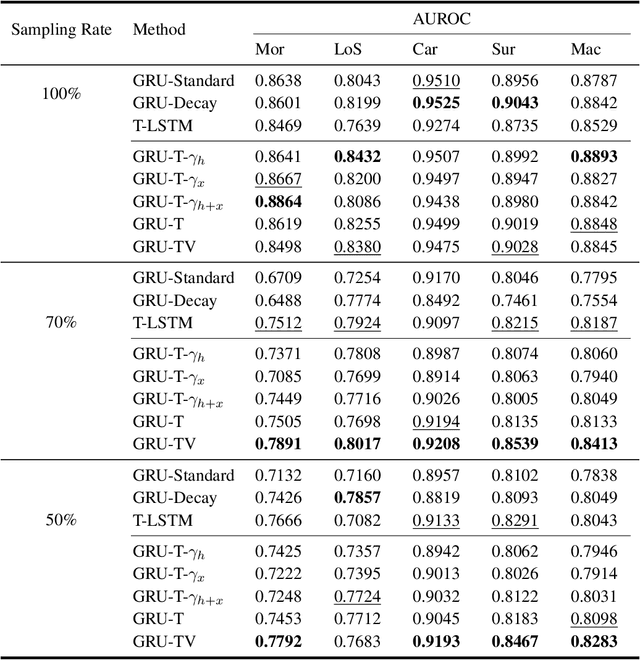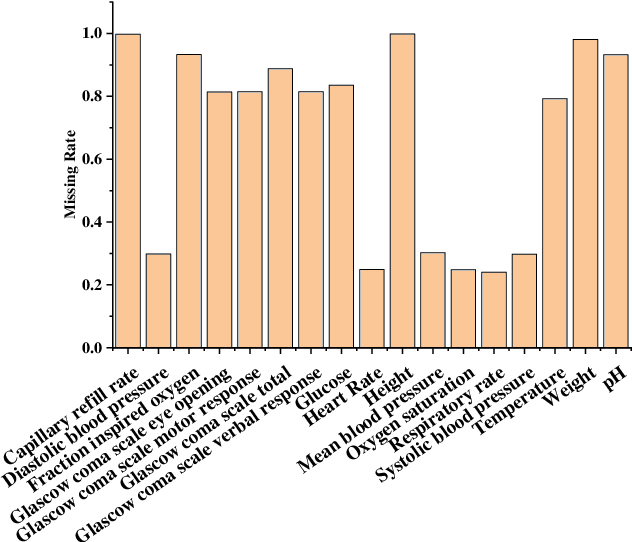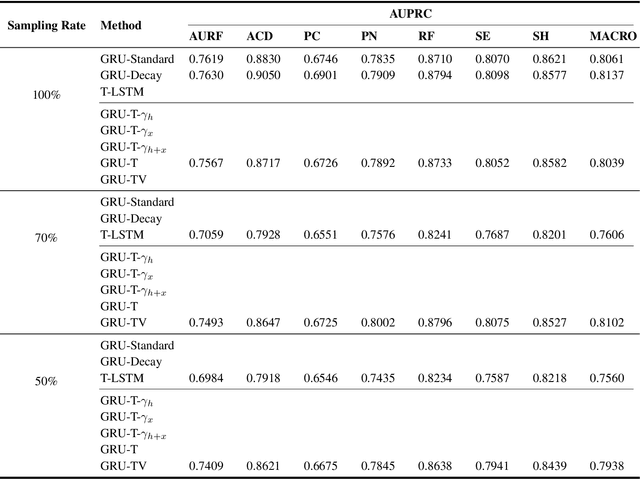GRU-TV: Time- and velocity-aware GRU for patient representation on multivariate clinical time-series data
Paper and Code
May 04, 2022



Electronic health records (EHRs) provide a rich repository to track a patient's health status. EHRs seek to fully document the patient's physiological status, and include data that is is high dimensional, heterogeneous, and multimodal. The significant differences in the sampling frequency of clinical variables can result in high missing rates and uneven time intervals between adjacent records in the multivariate clinical time-series data extracted from EHRs. Current studies using clinical time-series data for patient characterization view the patient's physiological status as a discrete process described by sporadically collected values, while the dynamics in patient's physiological status are time-continuous. In addition, recurrent neural networks (RNNs) models widely used for patient representation learning lack the perception of time intervals and velocity, which limits the ability of the model to represent the physiological status of the patient. In this paper, we propose an improved gated recurrent unit (GRU), namely time- and velocity-aware GRU (GRU-TV), for patient representation learning of clinical multivariate time-series data in a time-continuous manner. In proposed GRU-TV, the neural ordinary differential equations (ODEs) and velocity perception mechanism are used to perceive the time interval between records in the time-series data and changing rate of the patient's physiological status, respectively. Experimental results on two real-world clinical EHR datasets(PhysioNet2012, MIMIC-III) show that GRU-TV achieve state-of-the-art performance in computer aided diagnosis (CAD) tasks, and is more advantageous in processing sampled data.
 Add to Chrome
Add to Chrome Add to Firefox
Add to Firefox Add to Edge
Add to Edge